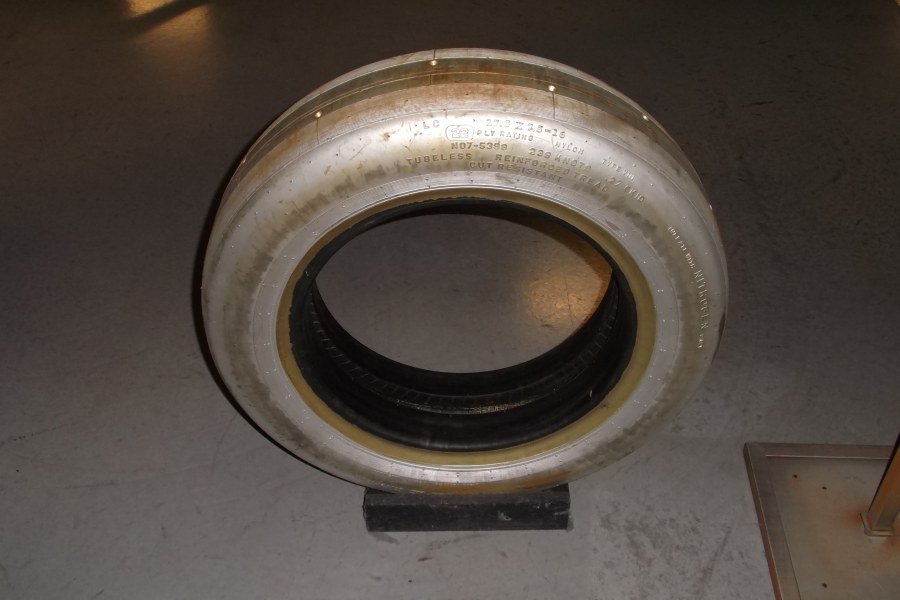The SR-71 Blackbird’s tires could withstand about 15 full-stop landings, but after ten takeoffs, they were replaced
The SR-71 Blackbird collected intelligence in some of the world’s most dangerous settings during its service. The SR-71 was designed to fly at very high altitudes, speeds, and temperatures. It was the first aircraft built of titanium since the air molecules’ friction against it at Mach 2.6 would have melted an aluminum frame.
Its engineering was so advanced that new tools had to be created in order to build the SR-71. There are a plethora of fascinating details regarding the legendary Blackbird. The SR-71, for example, had silver tires.
Why were SR-71 tires silver?
Powdered aluminum was infused into SR-71 tires, such as the one shown in the article’s featured image, according to the sign that goes with the tire on exhibit at the Kansas Cosmosphere and Space Center in Hutchinson, Kansas. When aluminum was added to rubber, the tire’s flash point increased significantly, which made it more resistant to the intense heat produced by friction with the ground when landing at very high speeds.
Nitrogen was also injected into the tires. Because there would be less oxygen in the tires when inflated with nitrogen rather than air, a fire would be less likely to ignite. The SR-71’s tires have 415 psi of pressure, whilst your car tires have 32–35 psi. The lifespan of each $2,300 tire is estimated to be about 15 full-stop landings.
As former A-12 and SR-71 pilot Colonel Ken Collins says, the tires could withstand about 15 full-stop landings, but they were changed after 10 takeoffs;
‘The tires were changed after 10 “takeoffs”. The wear & tear was during takeoff. The extreme pressure was at that point of rotation. That the reason we took off with half fuel load and air-air refueled shortly after takeoff, that reduced the tire stress. The temperature in the cockpit at the front windshield got up to 650 degrees F. Early in the experimental flight testing we wore silver suits. At cruise, if you touched the side canopy glass it would melt the silver coating on you glove. The coating on the suit was not “silver” metal. The cockpit and the pressure suits were air-conditioned. The cockpit got hotter as you burned the fuel. You were ready to get new fuel as it would cool it down.’
The SR-71 flew at an average speed of Mach 3, roughly 2000 mph, so it had to deflect a lot of heat! The SR-71’s metal skin would heat up to 400 degrees Fahrenheit at this high speed. To withstand the extreme heat, titanium made up more than 90% of the aircraft’s frame. To further dissipate excess heat, the SR-71 was coated with an extremely advanced and specifically blended black paint.
By disturbing incoming radar energy, the special paint also offered defense against detection by making the aircraft harder to identify by hostile forces.

One of the SR-71 tires is on display at the Hill Aerospace Museum.

The following video shows how the SR-71’s tires are kept from melting by Scott Willey, a docent at the Steven F. Udvar-Hazy Center of the National Air and Space Museum in Chantilly, Virginia.
Check out Habubrats and Born into the Wilde Blue Yonder Facebook pages for further Blackbird photos and stories.
Photo by U.S. Air Force and The Unwanted Blog

